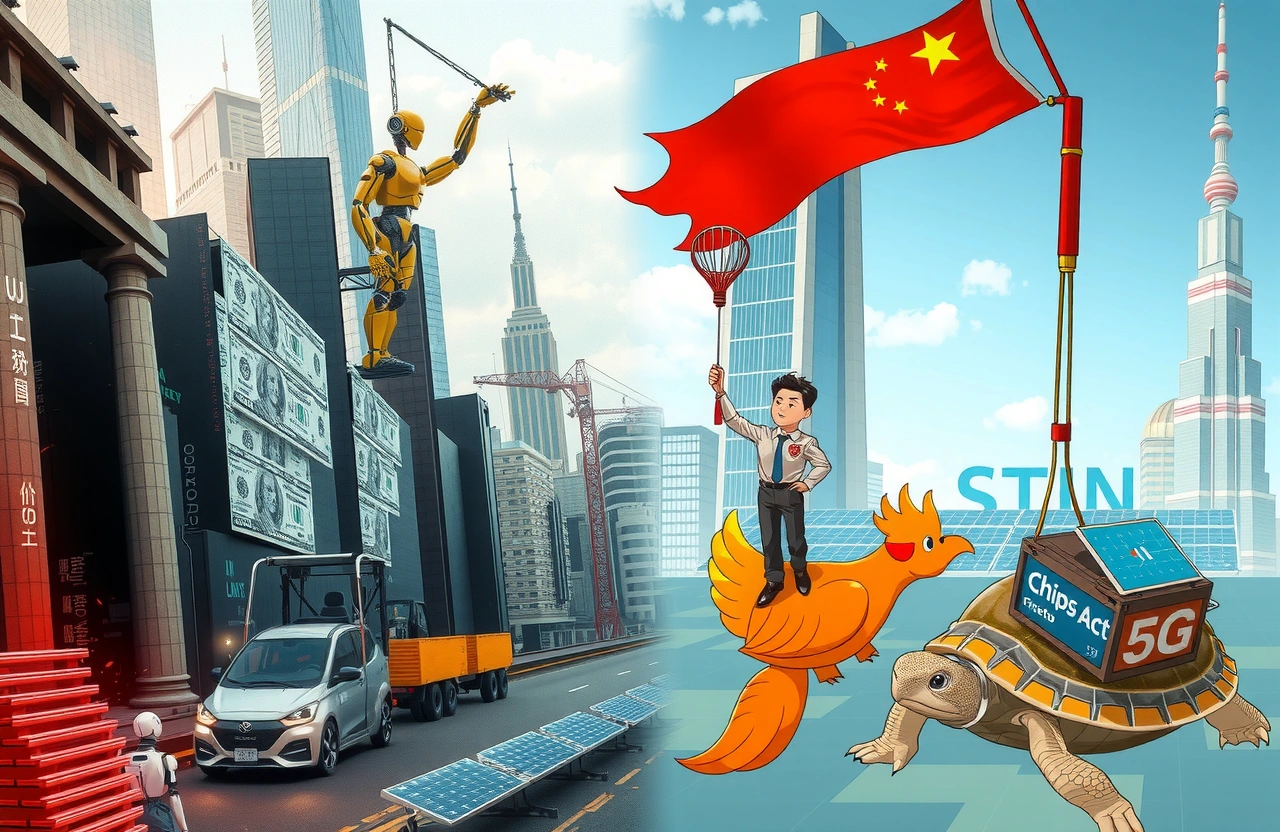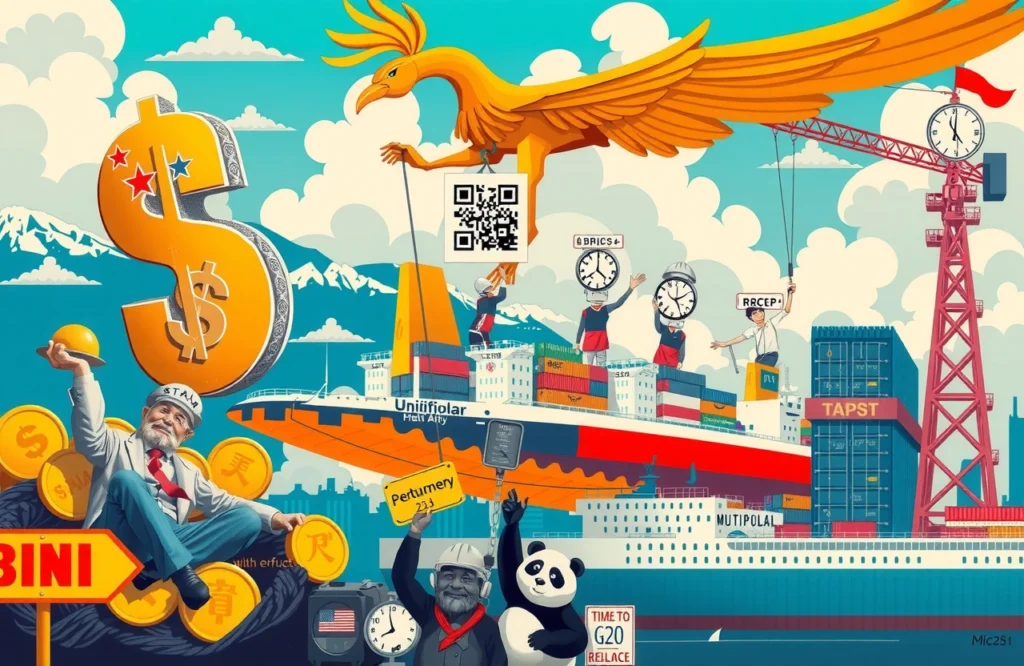The Global Realignment Moment
When former Vice Minister of Commerce Long Yongtu (龙永图) addressed Shenzhen’s 2025 China Enterprises Global Expansion Summit, his insights cut to the heart of global economic transformations. Hosted by Phoenix Network and Snow Beer’s premium Li series, this gathering occurred amid tectonic shifts in international supply chains. As America confronts economic vulnerabilities exposed by technological disruption, Long’s central thesis emerged with striking clarity: merely relying solely on the financial industry constitutes an unsustainable strategy in the AI era. This profound recognition now drives US policy shifts toward manufacturing revitalization – creating pivotal opportunities for Chinese enterprises.
The Hollowing Out of America’s Economy
Long Yongtu pinpointed anxiety within US policymaking circles regarding economic ‘hollowing out’ through decades of manufacturing decline. Despite Wall Street’s dominance, the absence of robust industrial foundations creates systemic vulnerability.
AI’s Manufacturing Imperative
Breakthrough technologies like artificial intelligence reveal limitations when divorced from production ecosystems. As Long stated, advanced algorithms require physical implementation – robotic assembly lines, semiconductor fabs, and precision tooling facilities. Without production pipelines, revolutionary AI becomes academic theory rather than economic fuel.
- US manufacturing employment fell from 17 million (2000) to 12 million (2023)
- CHIPS Act allocates $52B to semiconductor reshoring
- New manufacturing construction surged 70% year-over-year (2023)
Financialization’s Limitations Exposed
The fragility of banking-centric models surfaced through recent crises. Long observed that sustainable wealth generation requires tangible value creation beyond financial engineering. This acknowledgment fundamentally redirects US industrial policy toward production renaissance.
China’s Manufacturing Advantage
Chinese enterprises possess distinct competitive edges according to Long Yongtu’s analysis. The nation’s manufacturing ecosystem provides unique scaffolding for technological integration.
The AI-Manufacturing Synergy
Artificial intelligence applications in Chinese factories demonstrate transformative potential:
- Predictive maintenance reduces downtime by 35%
- Computer vision quality control cuts defects by 90%
- Generative design accelerates R&D cycles
Long emphasized China’s opportunity: “Technologies like AI have tremendous application potential within our manufacturing systems, pushing industrial upgrading.” This synergy counters domestic economic headwinds while strengthening global competitiveness.
Strategic Global Expansion Frameworks
Foreign expansion should prioritize manufacturing-led models argues Long. Technology-transfer partnerships build goodwill while establishing enterprise resilience:
- TCL’s display factories in Vietnam leverage automation expertise
- BYD electric bus plants in Europe integrate battery tech
Navigating Geopolitical Complexities
Tariff conflicts and trade barriers demand sophisticated navigation. Long offered pragmatic pathways through tensions escalating since the trade war initiated by former US president Donald Trump (唐纳德·特朗普).
The Enduring Resilience of Trade Systems
World Trade Organization frameworks still provide stability anchors despite fragmentation pressures. Rules-based engagement gives Chinese enterprises predictable operating parameters even amid political friction. Long reminded delegates: “For decades we’ve proven Western markets adapt to quality producers.”
Structural Decoupling Versus Market Logic
Corporate decisions ultimately follow resource economics rather than political directives: Mexican factories demonstrate reshoring offsets tariffs not replacement.
- China-Mexico trade surged 15% post-USMCA implementation
- German auto investments in Xinjiang continue expansion
Technology-Led Globalization Pathways
Emerging industries present asymmetric opportunities for Chinese firms. Long Yongtu contends that monetizing digital IP through manufacturing creates unbeatable synergies.
The Green Technology Export Wave
Climate imperitives align with Chinese industrial strengths: solar panel production dominance positions companies like LONGi as indispensable suppliers. Renewable infrastructure projects in Belt and Road nations showcase integrated solutions combining financing, construction, and technology.
Phygital Production Models
Digital twins merged with physical operations establish new competitive moats. Companies successfully blending these domains report:
- 25% faster new product deployment
- 17% lower inventory requirements
- 13% higher quality compliance
The Dawn of Collaborative Globalization
Ultimately, Long Yongtu positioned current disruptions as catalyst for more equitable engagement. The 2025 Summit’s “For an Open World” theme spotlights mutual dependencies now acknowledged even historically adversarial capitals.
Practical Adaptation Frameworks
Enterprises navigating transformation should prioritize:
- Manufacturing localization near key consumer markets
- Technology standardization across global operations
- Talent development pipelines including foreign engineers
Seizing the Disruption Dividend
America’s acknowledgment that relying solely on the financial industry undermines technological innovation represents a pivotal market signal. For Chinese enterprises, integrating superior manufacturing capabilities with emerging technologies creates formidable expansion advantages. Simultaneously, increasing private-public coordination accelerates market access globally. The closing imperative? Embed technological adaptation within corporate DNA while projecting competitive strengths internationally – transforming challenges into durable advantages through balanced economic engagement.
Explore Ministry of Commerce industrial partnerships compatible with your specialization through the China Council for the Promotion of International Trade online portal.




